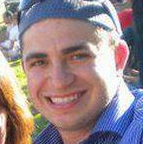Using blockchain to democratize ancestry research
It’s a popular hobby. Especially in the modern Western world where individuality trumps collective culture, people often lose touch with their family histories, but given time the desire to know more conquers. It’s also theon account of the fact the human population has simply grown so much in such a short time. We went from 1 billion to 7 billion people in about 100 years — naturally, descendants from common (recent) ancestors are going to lose contact with each other as this population sprawls.
People now spend thousands of dollars to travel abroad in search for hidden family records centuries old. They will spend years compiling information and very carefully organizing that data in special binders that are pulled off the top bookshelf for family reunions and holidays.
In the last two decades, Ancestry.com and MyHeritage have become financial powerhouses because of their customers’ desire to know more. Piecing together these histories gets a lot easier when someone is dedicated to it full-time and that person (or company) has a ginormous database of information they have spent years compiling from around the world and painstakingly translating for paying customers’ consumption.
That data has imperfections though. A cursory look at free samples shows duplicate records and a lot of uncertainty based on birthdays and missing information like relatives or dates of death. Two people with the same name might be born within a couple years of each other, but an error on either profile (or both!) can confuse a family tree.
Imagine for a second though that you had a single, immutable record where people can constantly contribute and draw connections between sets of data. Every suggested connection (or set of connections if enough inferences can be drawn by the two contributors) would have to be validated by both providers of the ancestry information, then further approved by a third party.
Welcome to the world of a global family tree blockchain.
A unified family tree made possible by blockchain approvals
In this case, data is volunteered by individuals instead of requested from government offices and dusty archives. Here, the data (which might be free or information rewarded whenever new distant family tree connections are validated) is democratic.
Such a system would push down the gatekeepers of such data, making it possible to reunite families on a much larger scale.
What distinguishes this blockchain is its openness. Individuals can enter in as much data as possible about themselves and allow algorithms to draw inferences.
Implementing this kind of model would have massive implications for the ancestor-search business. New players or established ones can benefit by using this as a new way to collect data, as well as solicit more information for their databases by rewarding people who submit information and whose personal/family data is validated by others.
Reconnecting long-lost relatives, directly
But step away from the standard family-tree enthusiast for a moment. Imagine something else. Imagine a refugee or an adoptee or a Holocaust survivor who wants to connect with someone they have not seen in years, perhaps decades. Now, this blockchain-powered platform provides one single wide net where long lost relatives have a better chance of finding each other. The descendants of survivors, who often seek out lost connections, would be the immediate beneficiaries of such an infrastructure.
There is no telling how expansive a fully-compiled family tree on this kind of system can get. But imagine the way the world would change if we could enter long lost data together and receive rewards whenever we add data someone else considers valuable.
This system would grow more sophisticated over time, allowing contributors to enter personal DNA data (which they might acquire from a service like 23andme or AncestryDNA).
As personalized genetic testing becomes more specific, algorithms might be able to estimate the probability of familial connections between two unconnected people. That would be extremely exciting. Beyond grafting together family trees, it might also go a long way connecting people with similar medical conditions, having huge implications on the medical world and mutual patient support programs.
The more connectivity we have, the closer we get to each other. And, quite possibly, the more reunited we can all become.
Join the Orbs community:
- GitHub: https://github.com/orbs-network
- Telegram: https://t.me/orbs_network
- Twitter: https://twitter.com/orbs_network
- Reddit: https://www.reddit.com/r/ORBS_Network/
- Read the Orbs white papers: https://www.orbs.com/white-papers
